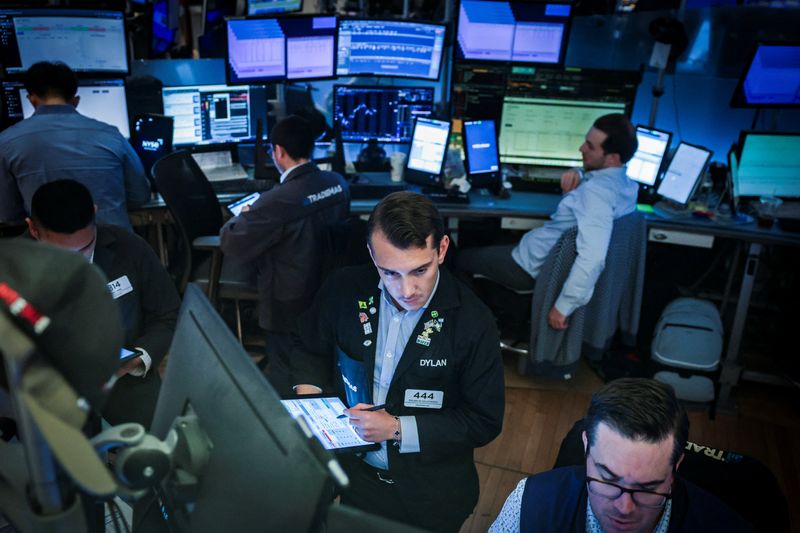By Jamie McGeever
ORLANDO, Florida (Reuters) -TRADING DAY
Making sense of the forces driving global markets
By Jamie McGeever, Markets Columnist
World markets got the week off to a subdued start on Monday, although the Nasdaq nudged a new high, as a light earnings and data calendar allowed investors to digest the latest tariff-related news and look ahead to Tuesday’s U.S. inflation figures.
More on that below. In my column today I look at the blizzard of U.S. labor market data – often conflicting, sometimes distorted – and ask which number best shines a light through the fog. Could it now be continuing jobless claims?
If you have more time to read, here are a few articles I recommend to help you make sense of what happened in markets today.
1. Fed structure may be in flux, not just rates: Mike Dolan 2. Trump’s Fed pick wanted to upend its protection frompolitics 3. Trump opens door to sales of version of Nvidia’snext-gen AI chips in China 4. Debt market jitters signal caution for high-flyingstocks 5. China’s July factory-gate prices miss forecast,deflation concerns persist
Today’s Key Market Moves
* FX: Dollar index rises 0.4%. Bitcoin hits one-month highabove $122k to close in on record peak, but ends day lower. * STOCKS: Nasdaq and Australian stocks hit new highs. ButWall Street’s big three indices fall 0.3-0.5%. * SHARES/SECTORS: Nvidia hits new record but ends lower,Intel gains 3.6% and TKO spikes 10%. The S&P 500 energy indexslides 0.8%. * BONDS: Treasury yields barely move more than 1 bp acrossthe curve. One of the quietest sessions in a while. * COMMODITIES: Gold slips 1.4%, soybean futures rise 2.5%- both related to tariff-related comments from Trump.
Tariffs, CPI nerves soften sentiment
Wall Street closed lower on Monday, even as the Nasdaq touched fresh highs, with the latest news related to U.S. President Donald Trump’s tariff war generally sapping risk appetite rather than strengthening it.
Trump signed an executive order on Monday extending the China tariff deadline for another 90 days, with only hours to go before U.S. tariffs on Chinese goods were due to snap back to triple-digit rates.
This came after a U.S. official told Reuters over the weekend that chip companies Nvidia and Advanced Micro Devices have agreed to give the U.S. government 15% of revenue from sales of advanced chips to China.
The news was surprising and confusing.
“It’s wild,” said Geoff Gertz, a senior fellow at Center for New American Security, an independent think tank in Washington, D.C. “Either selling H20 chips to China is a national security risk, in which case we shouldn’t be doing it to begin with, or it’s not a national security risk, in which case, why are we putting this extra penalty on the sale?”
